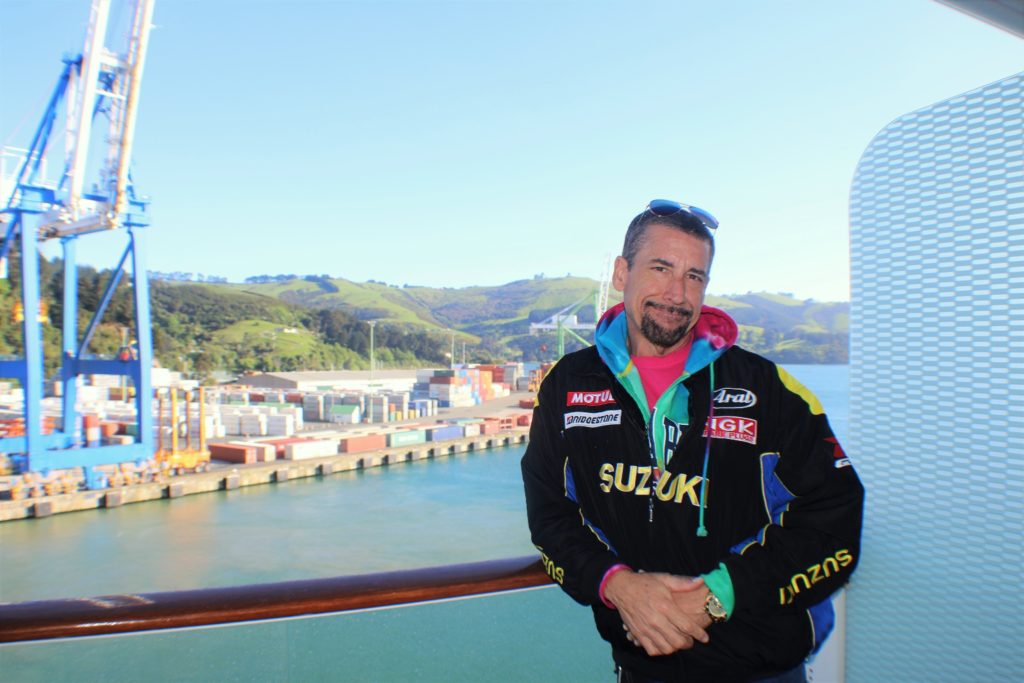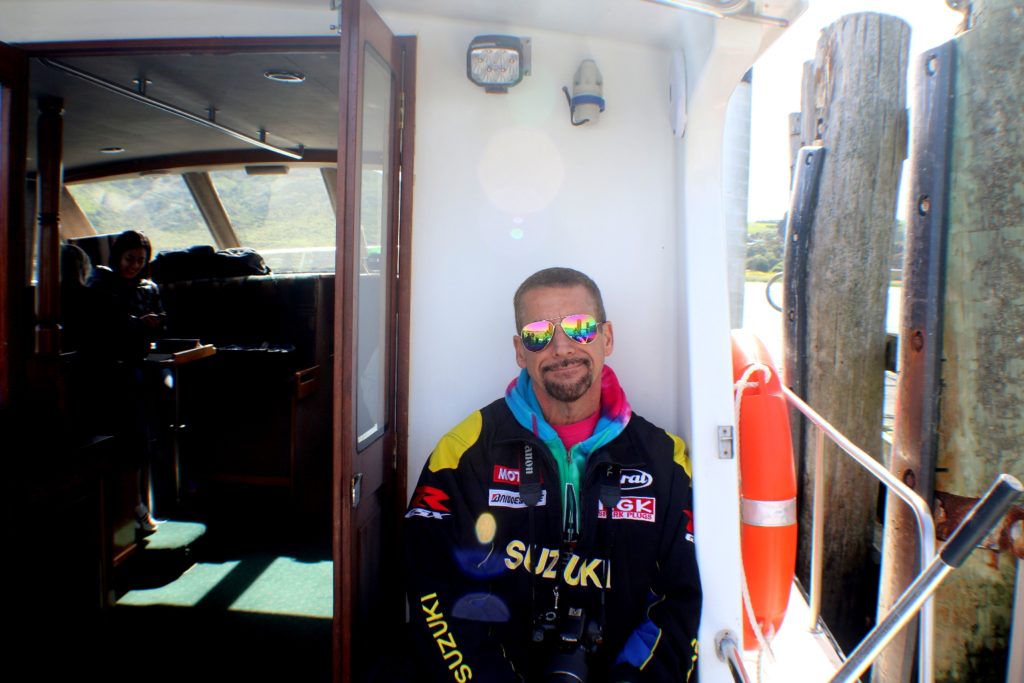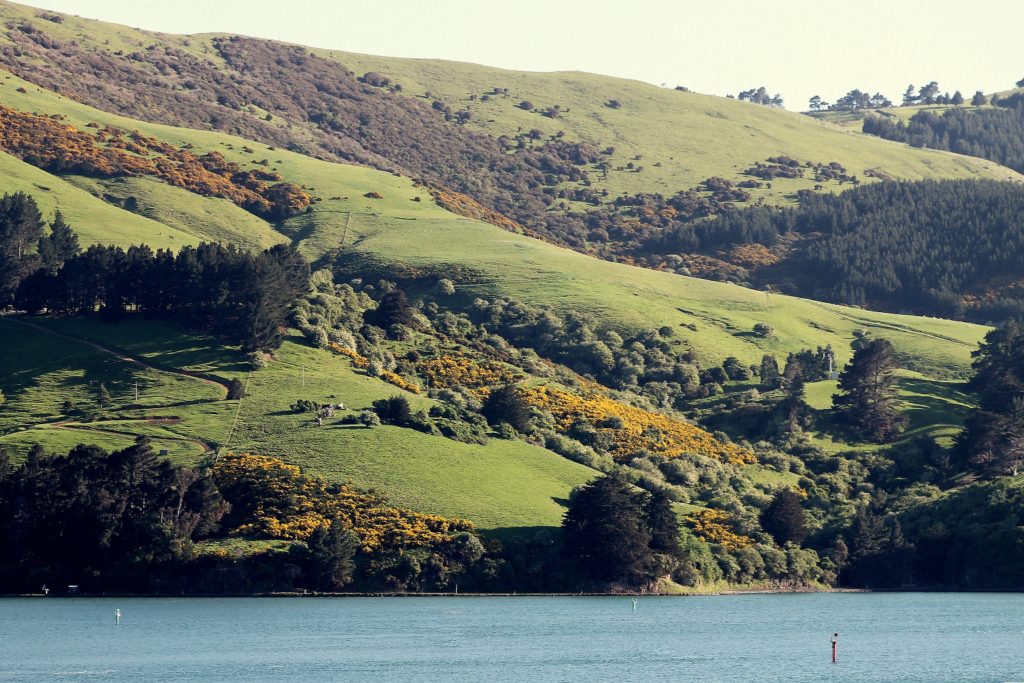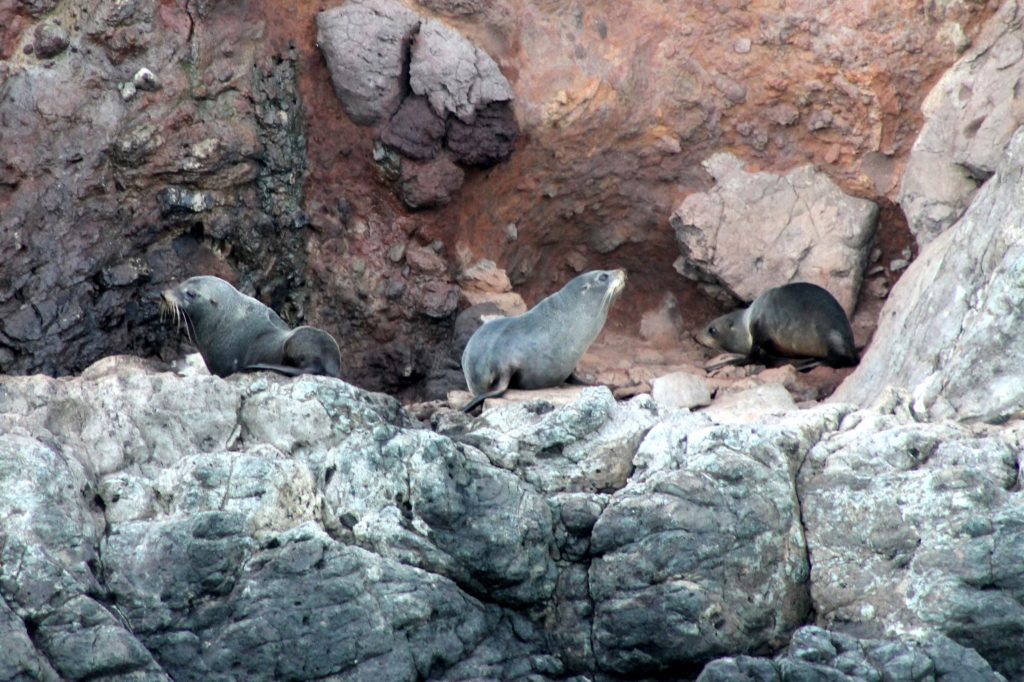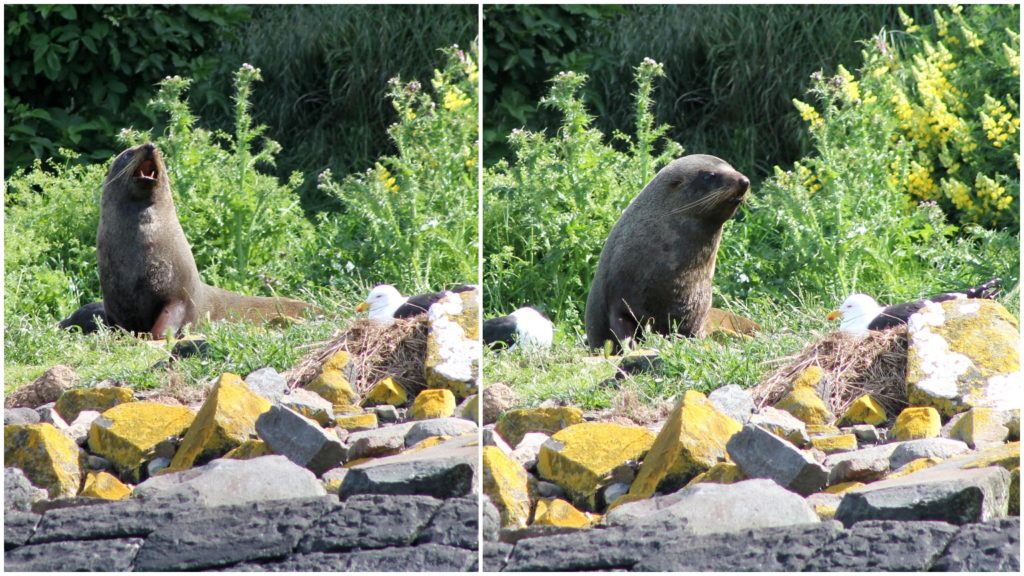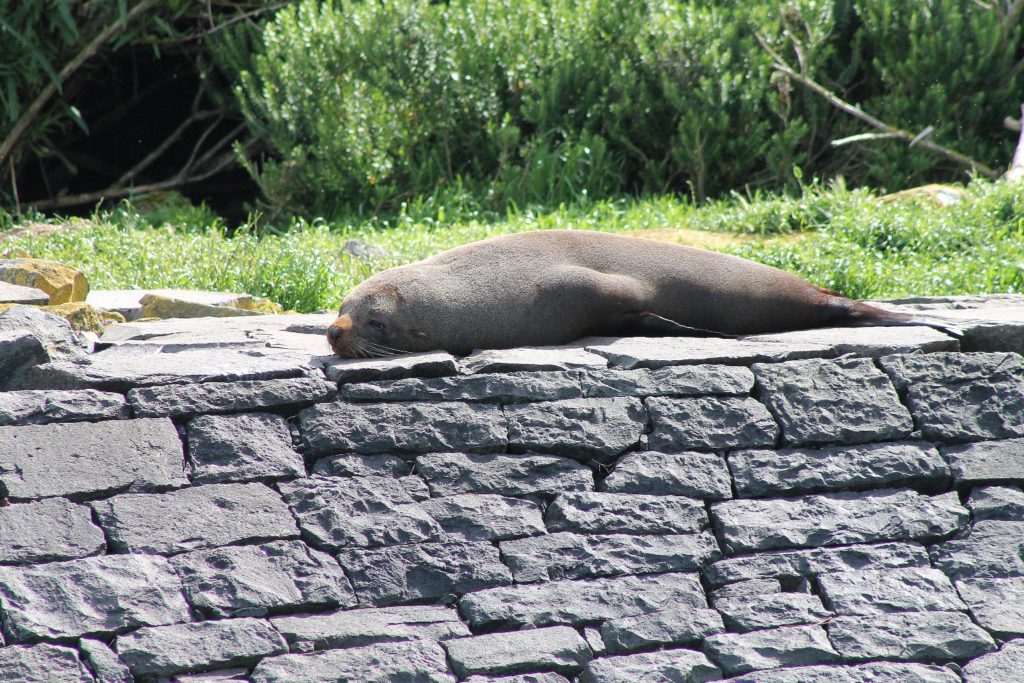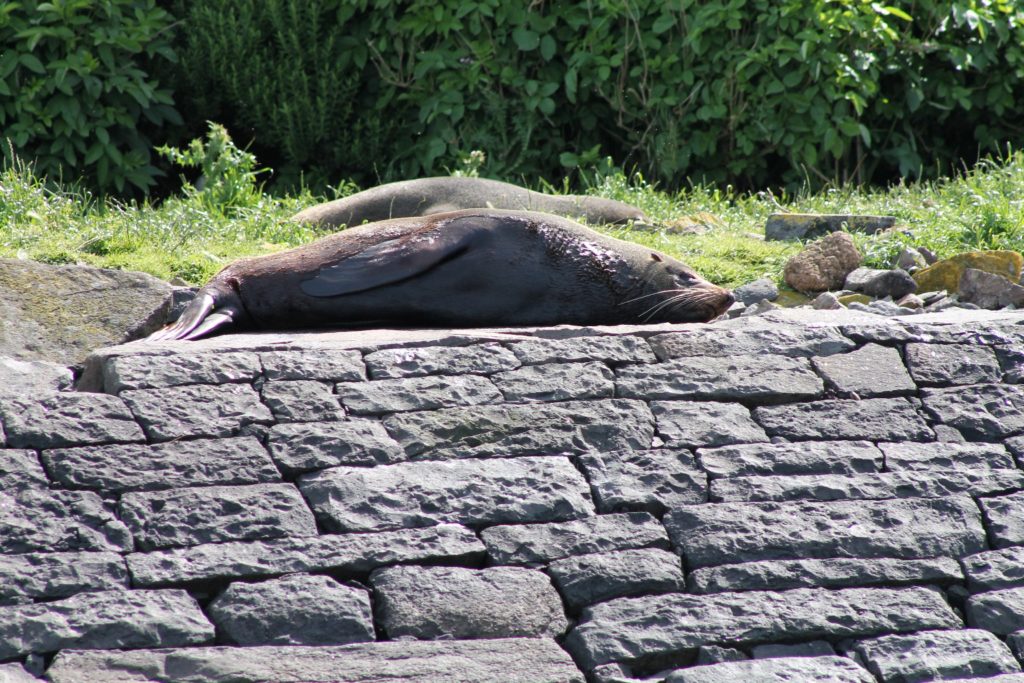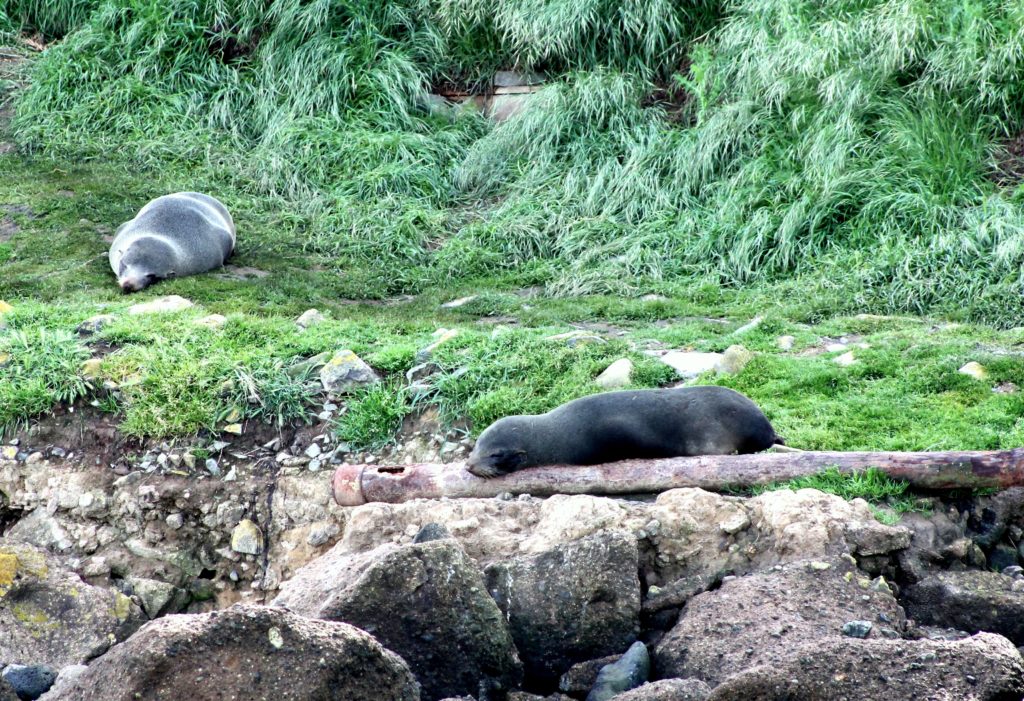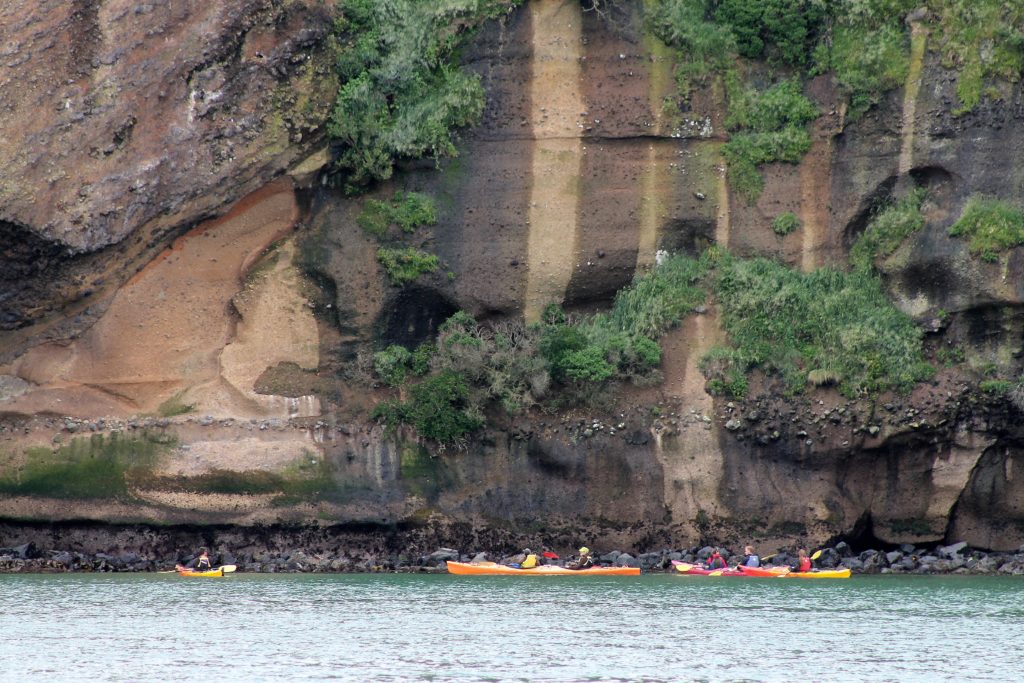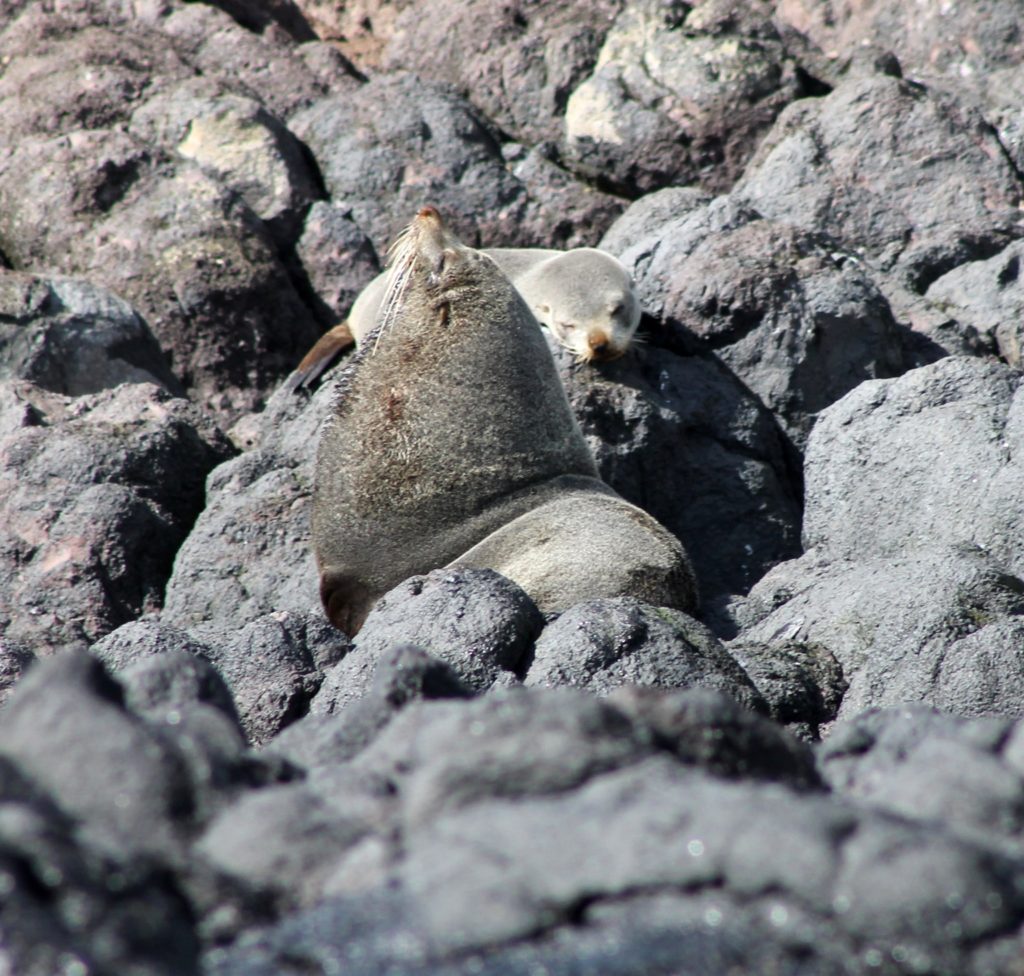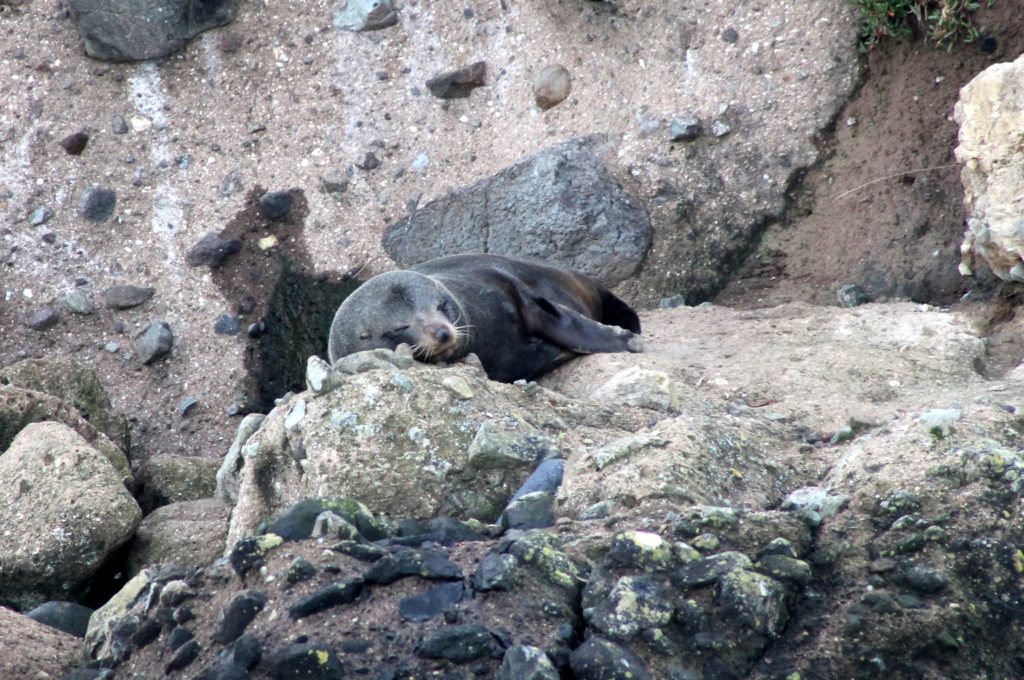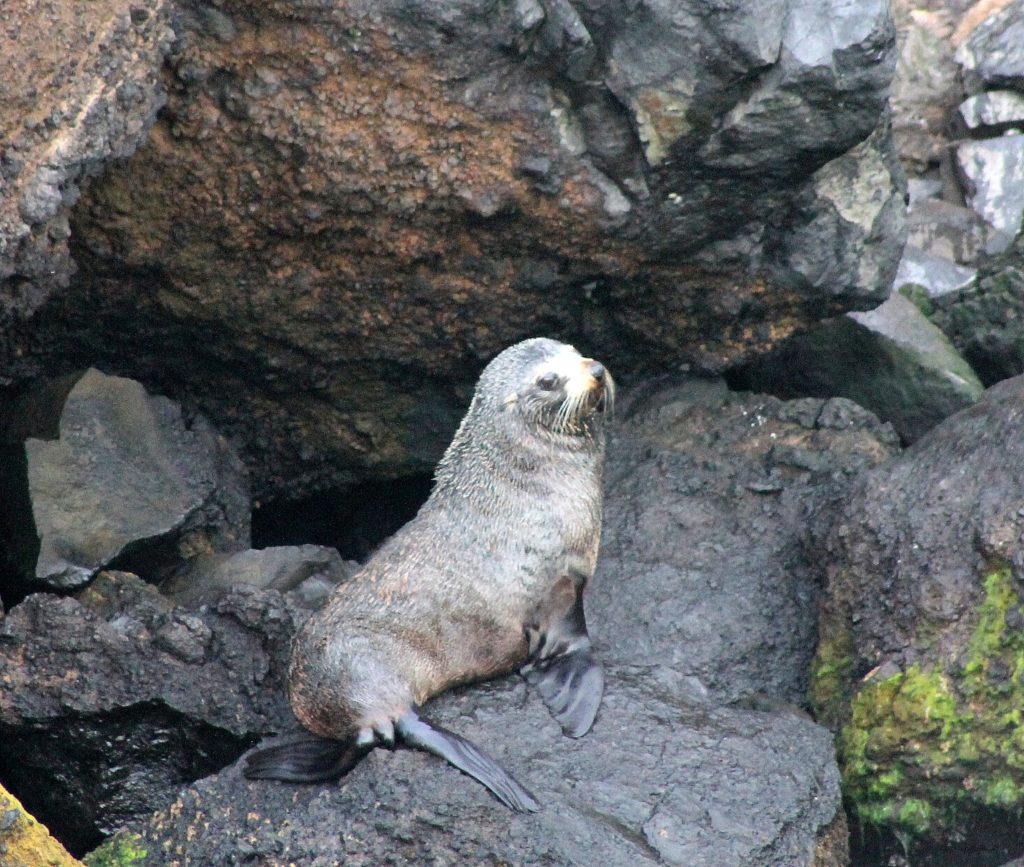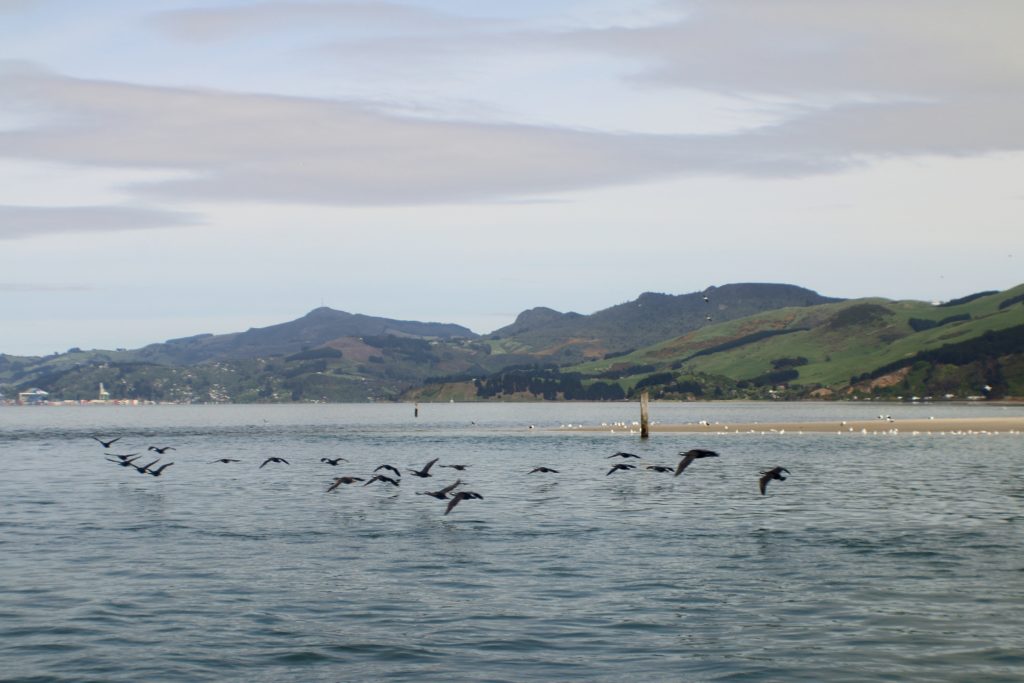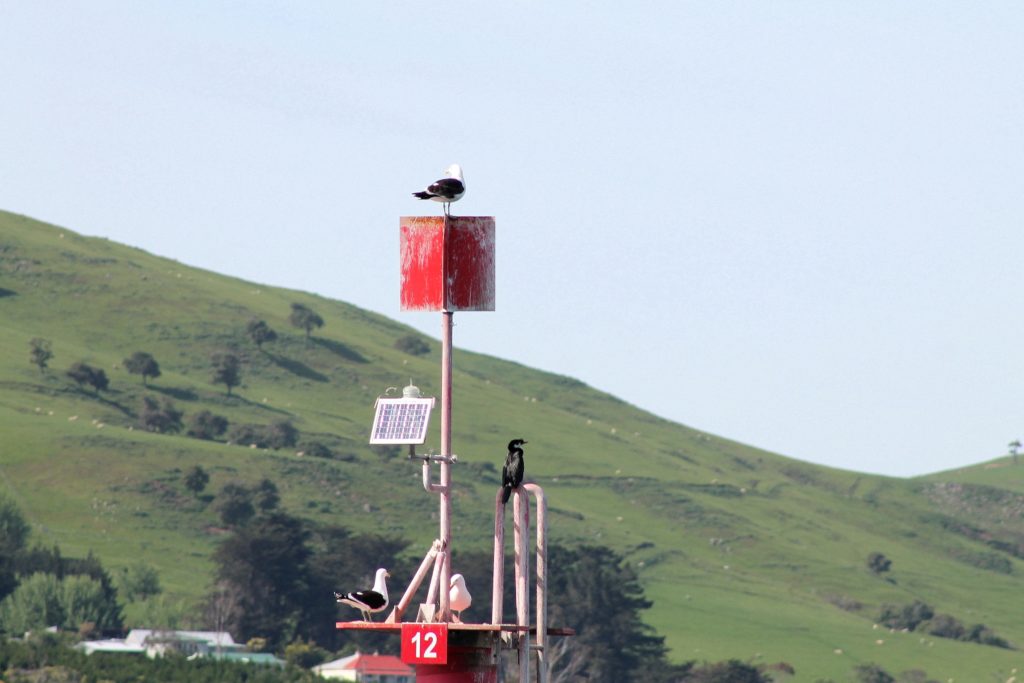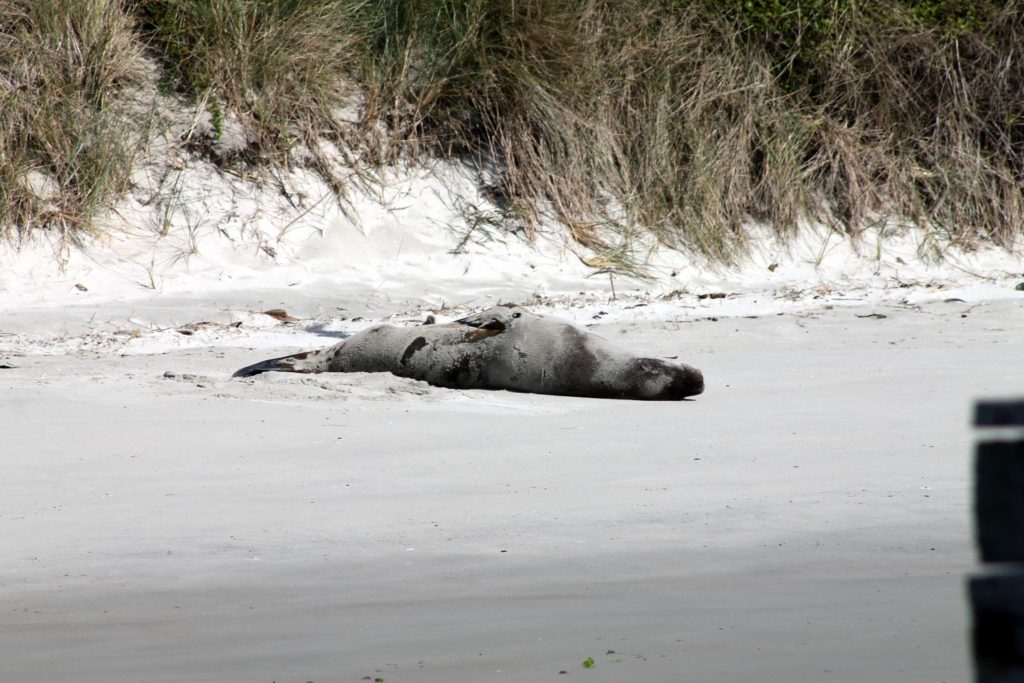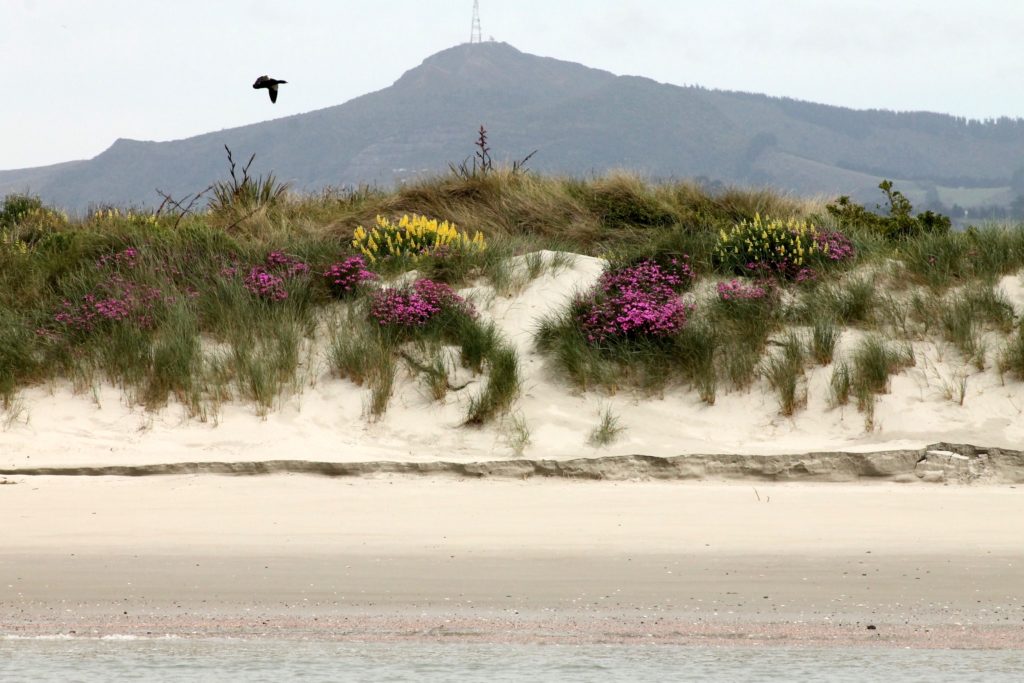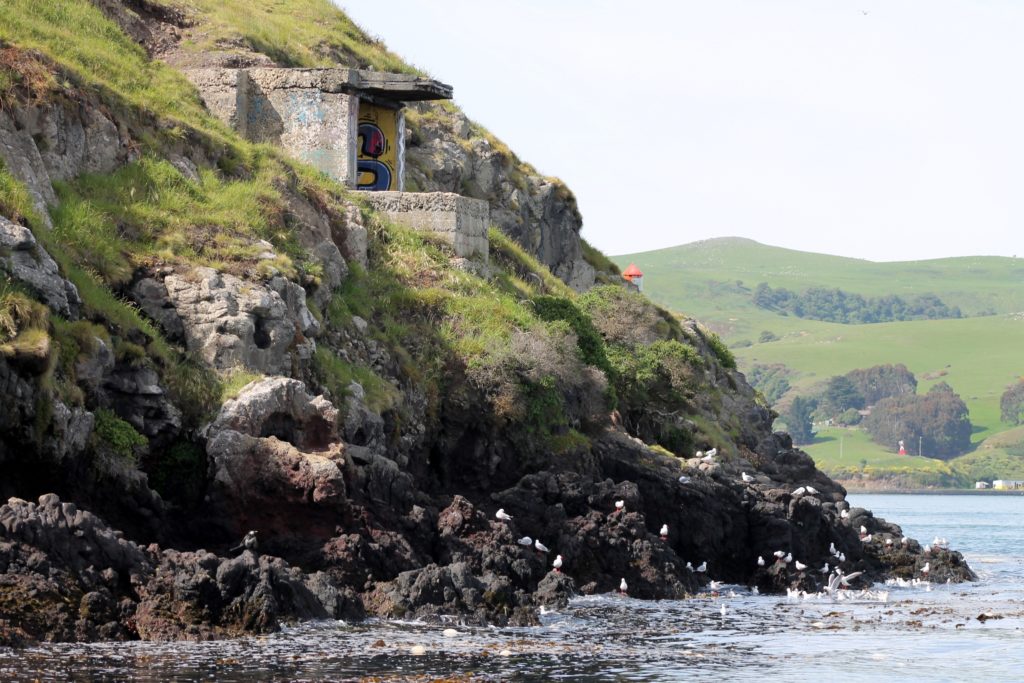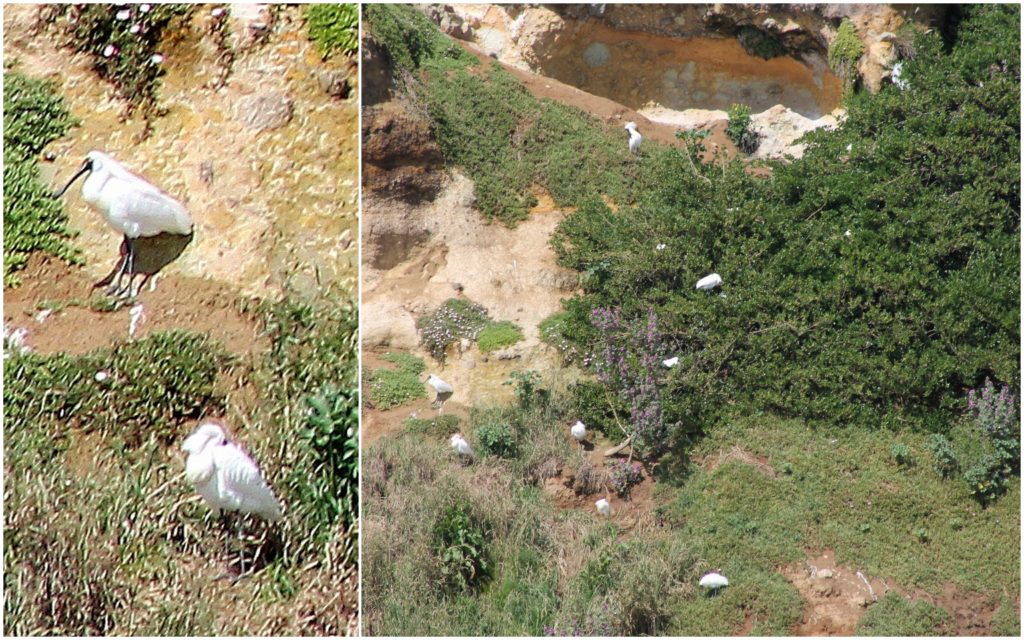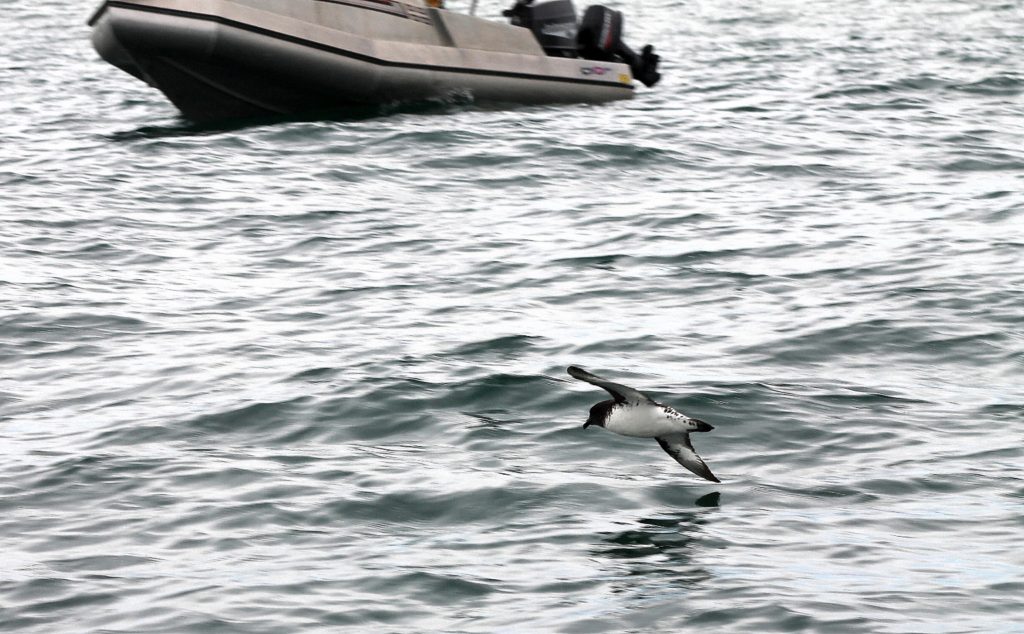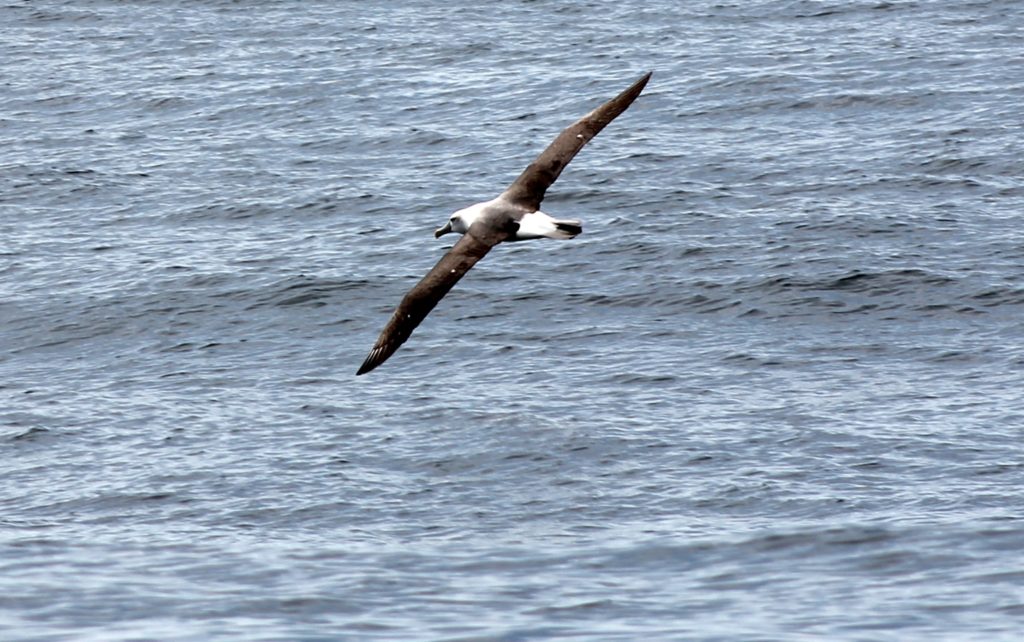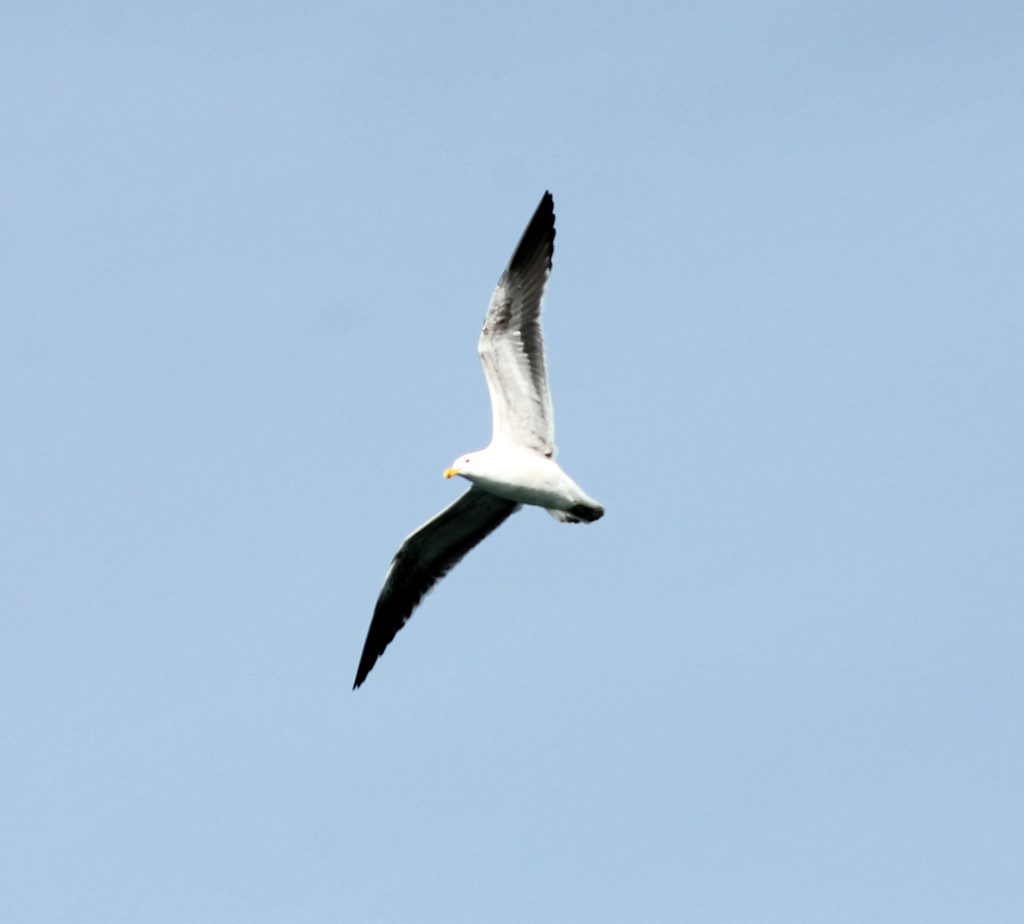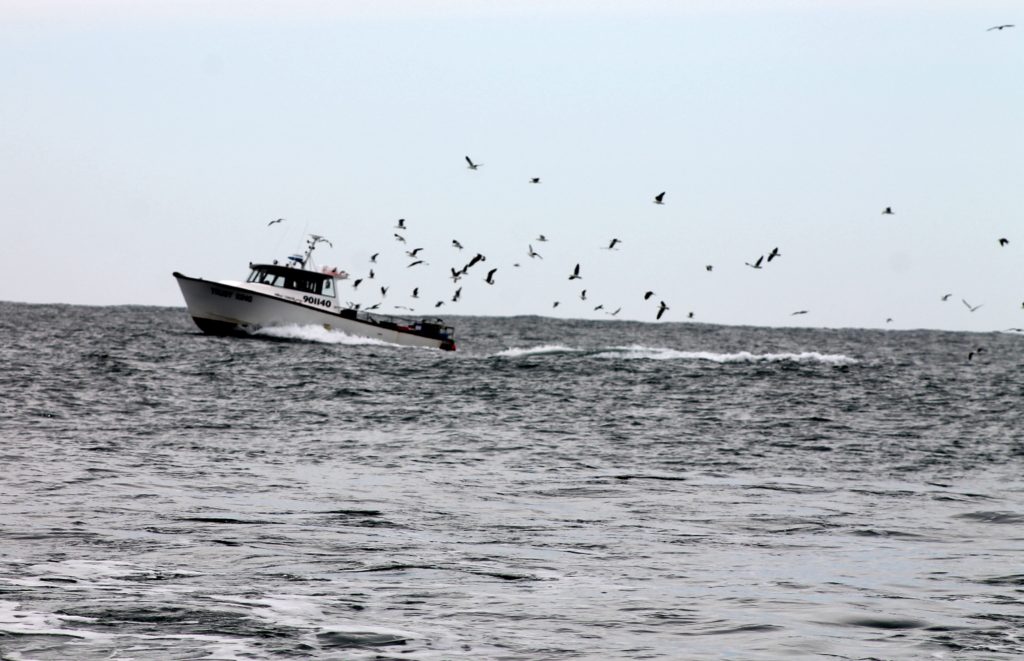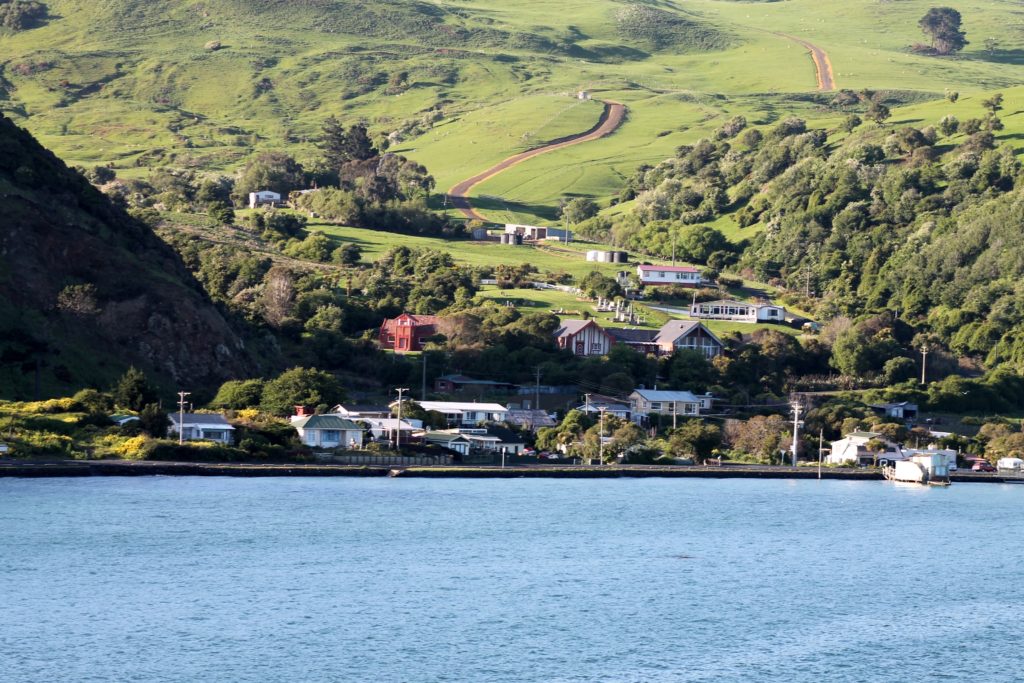
As our cruise ship was moving closer to the disembarking port, we started noticing the beautiful, picture perfect shores of the New Zealand’s South Island.
Another small boat was moving towards our cruise ship. Soon, we would be able to leave our ship and start exploring the land.
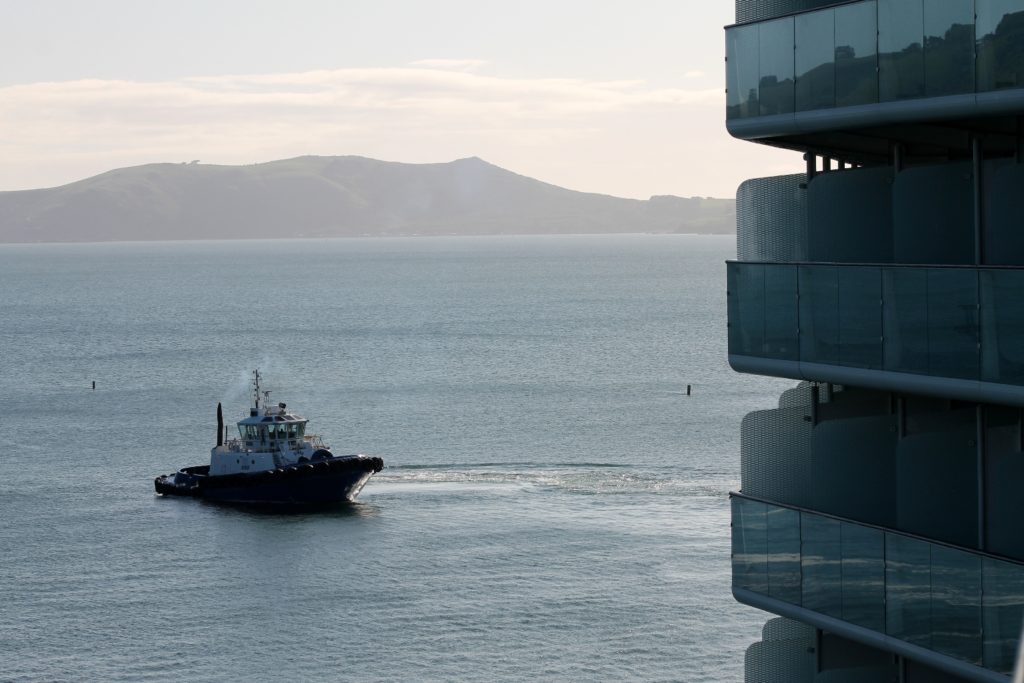
Arriving at Port Chalmers, a suburb and the main port of the city of Dunedin, New Zealand, with a population of 3,000. Port Chalmers lies ten kilometers inside Otago Harbour, some 15 kilometers northeast from Dunedin’s city center.
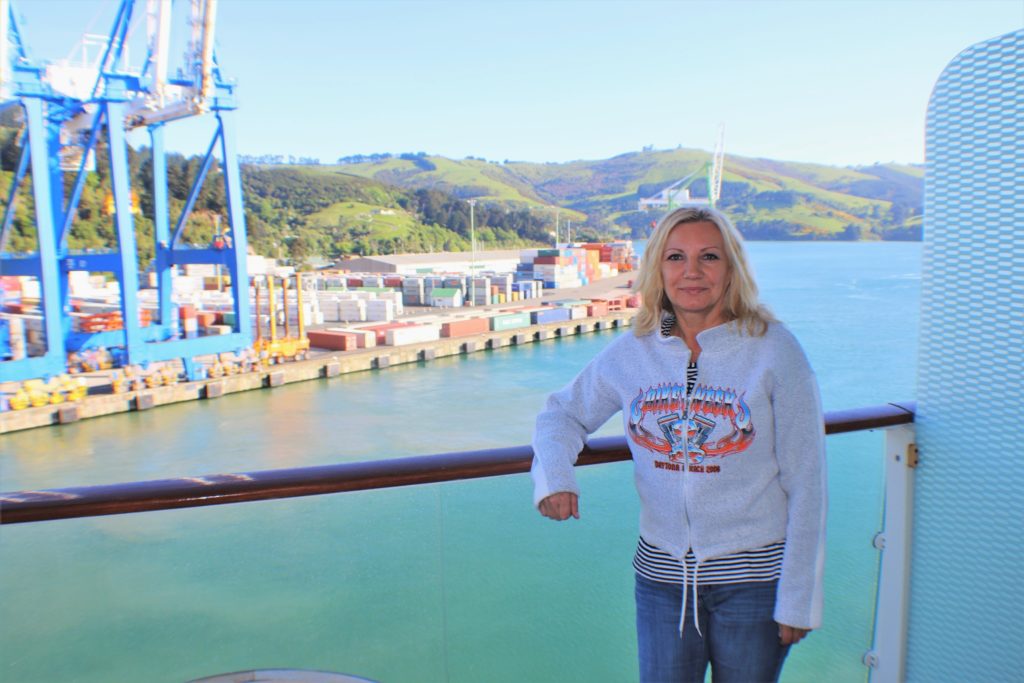
We were ready to get off the ship, but had to wait a little; too many people were leaving the ship. 🙂
Dunedin has one of the finest natural and most scenic harbors in the country, and is considered to be the “wildlife capital” of New Zealand. Therefore, we booked a 5-hour wildlife excursion: Otago Wildlife Cruise, Penguin Reserve & Dunedin Highlights. This is Vivienne J boat (owned by Monarch), which took us on the excursion.
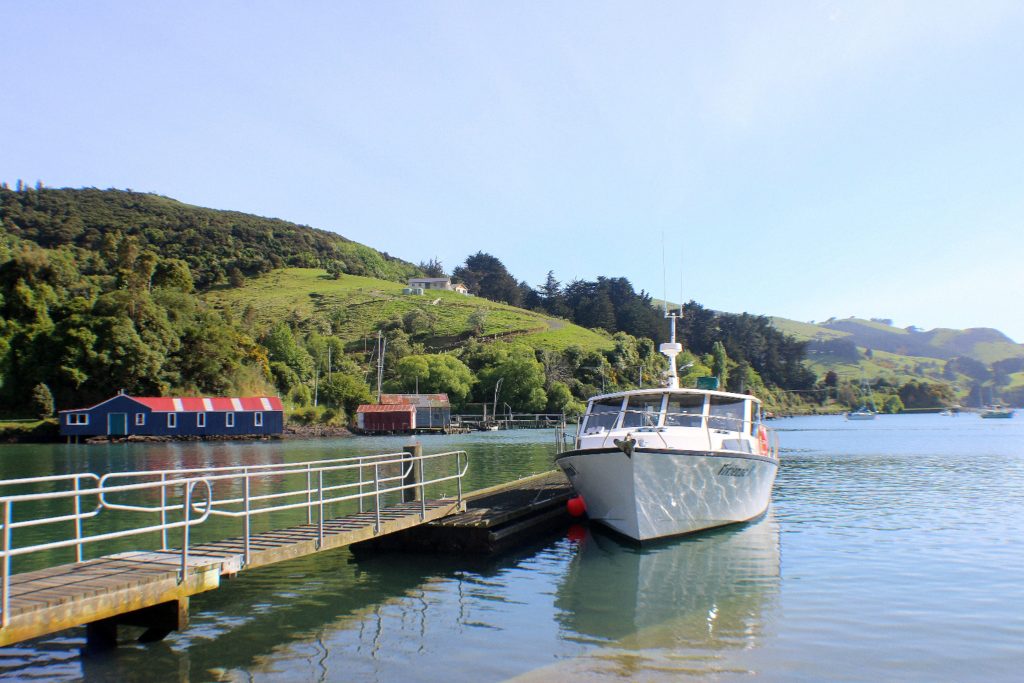
We had a small group, only 7 people, which was great! On the way we were hoping to see what can’t be seen from land: Little Blue Penguins, Seals & Sea Lions, Shags (Cormorants), the Royal Albatross flying, and many other birds and wild life. Wild life is always fickle, you hope to see it, but probably won’t, in this instance we were lucky, we saw quite a few species.
The crew provided a full commentary about the wildlife, history and geology as the boat explored the stunningly beautiful and rugged coastline close to the entrance of the Otago Harbour.
The driver was brilliant at driving the boat and at spotting wildlife and when required he manuevered the boat to get the best out of the wildlife sightings.
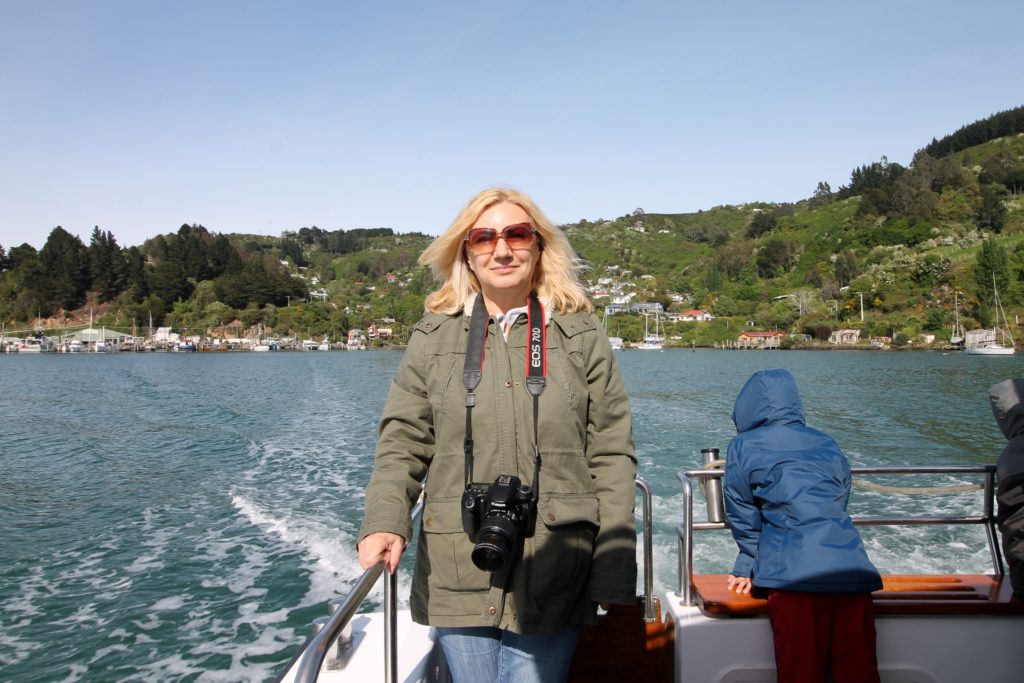
These yellow plants are not really pretty flowers, they are actually weeds, that were brought by early European settlers. They spread out of control, no means to get rid of them.
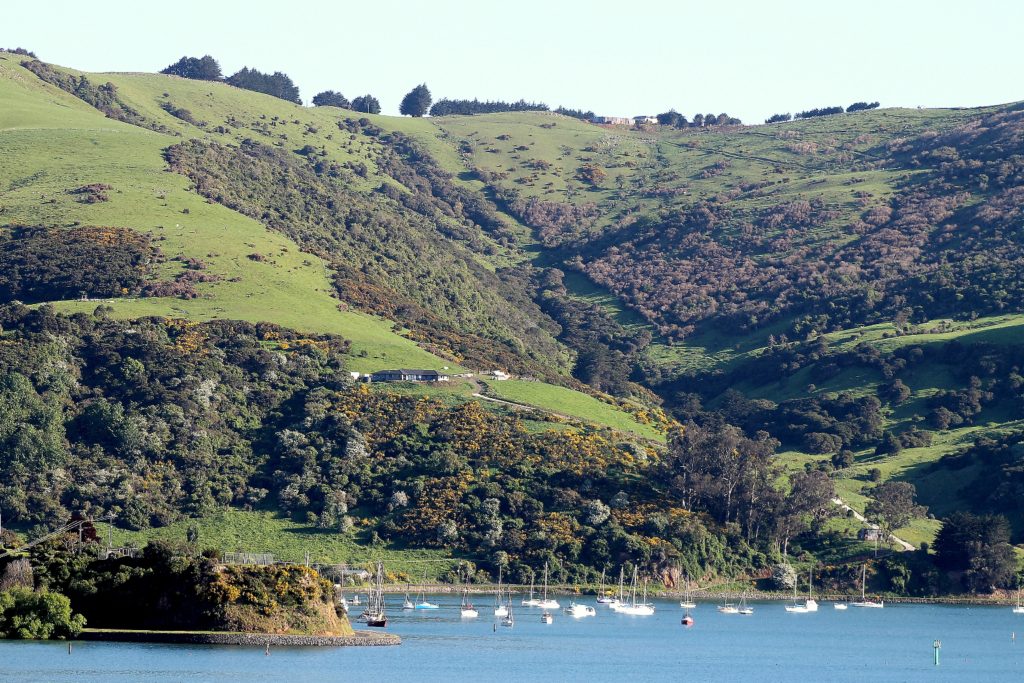
We brought our cameras, but the crew supplied us with binoculars and warm jackets upon request.
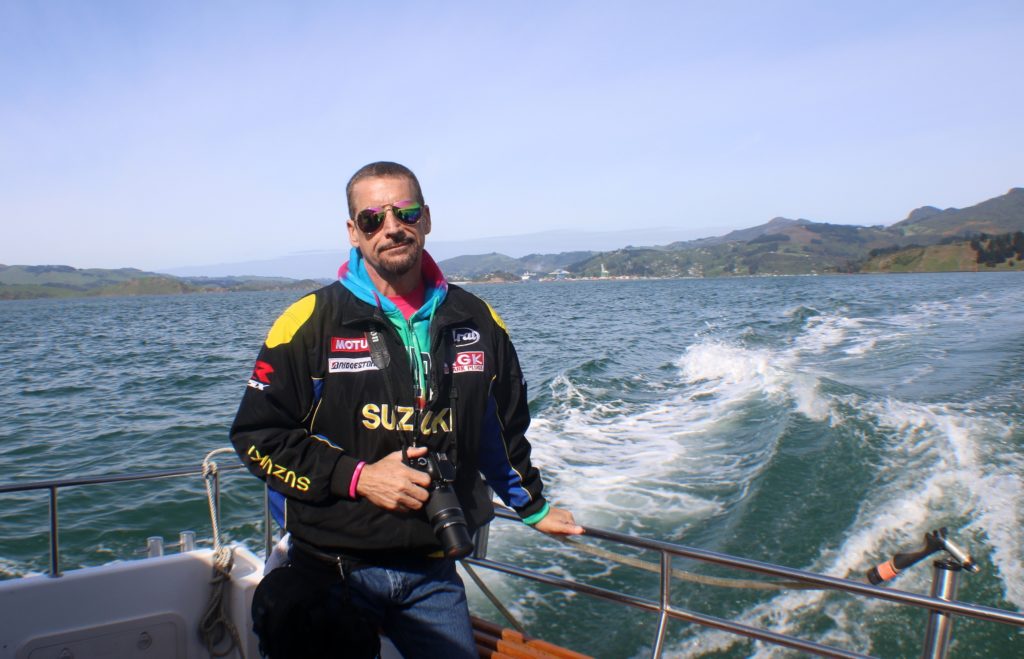
Such different scenery along the coast.
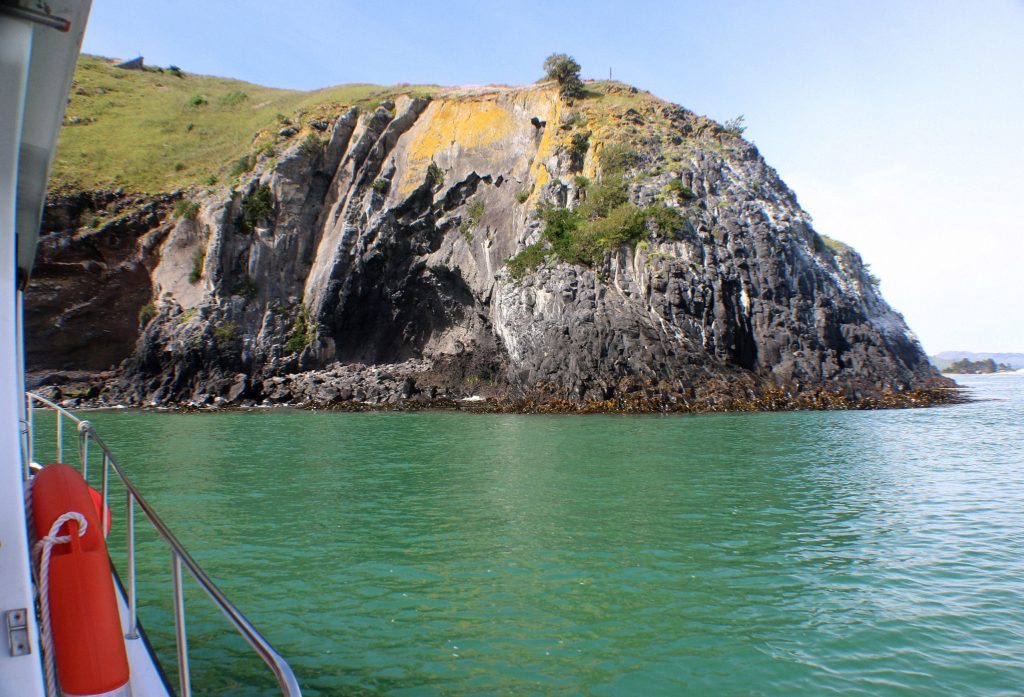
The rocky places are the best for the fury seals. All pics were taken with a telephoto lens. It was good to see wild life through the binoculars, a little too far for the naked eyes. Fur seal, Otago Peninsula.
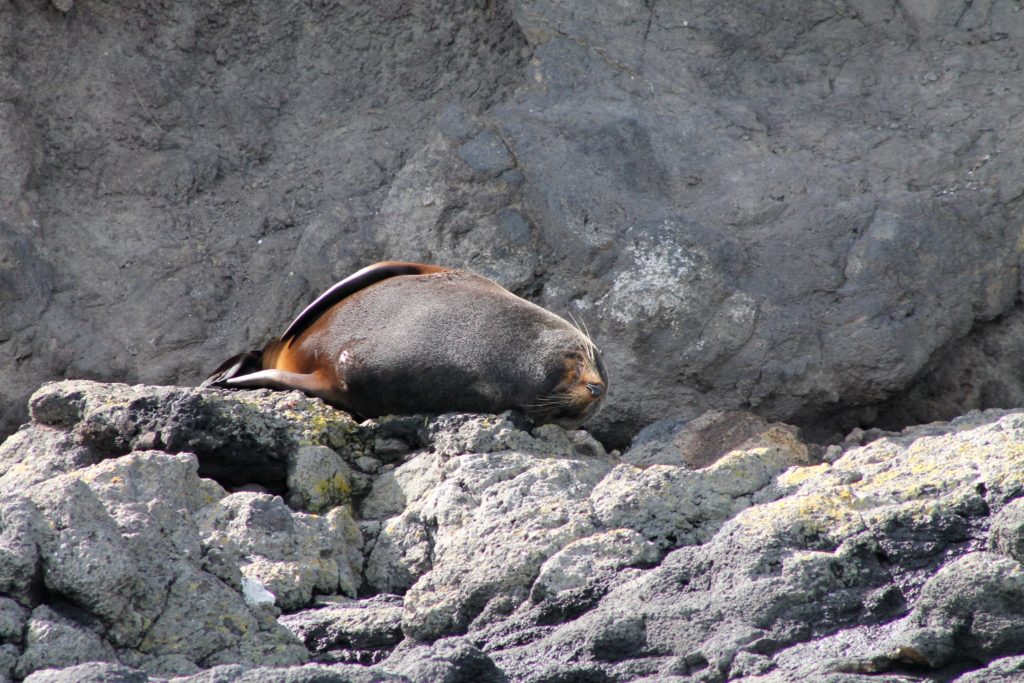
We were able to get a glimpse as the NZ Fur seals breed, fight and play on the rocks around their breeding rookeries.
We spotted a colony of cormorants or the endangered New Zealand shags.
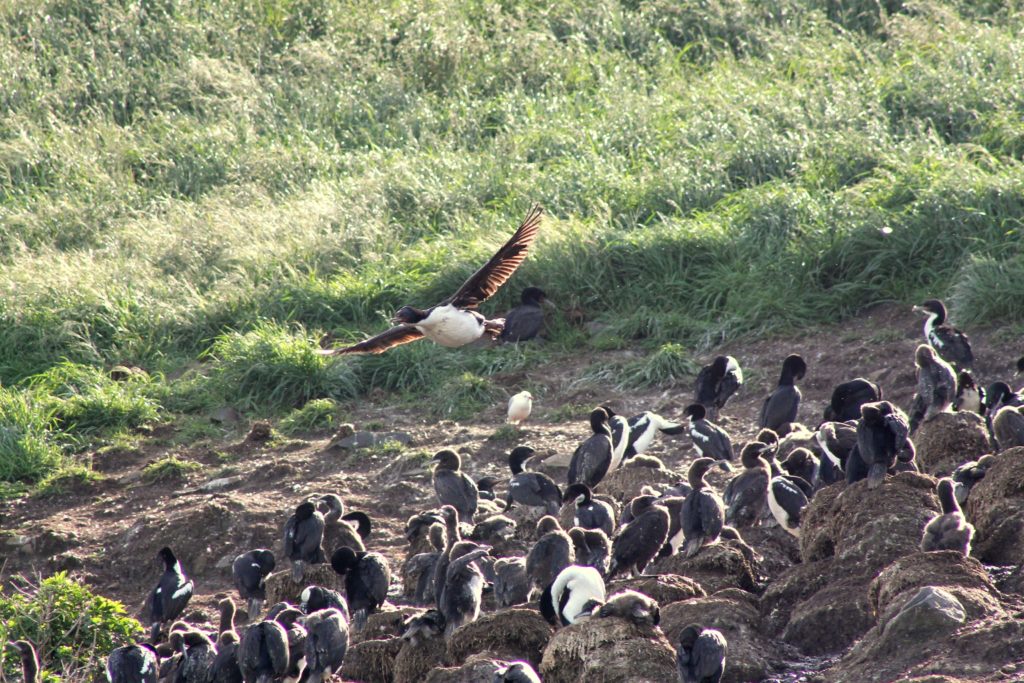
It seems like they are fond of cliffs.
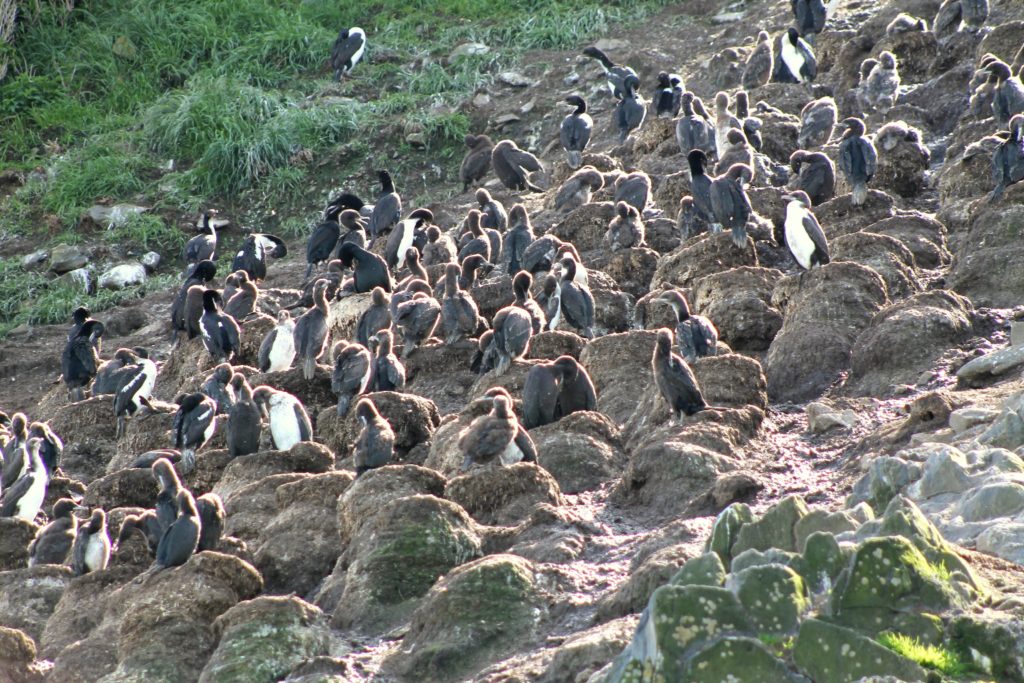
I guess, the closest way to see the seals is from a kayak.
A seal pup. So cute!
Fur seals. Amusing creatures!
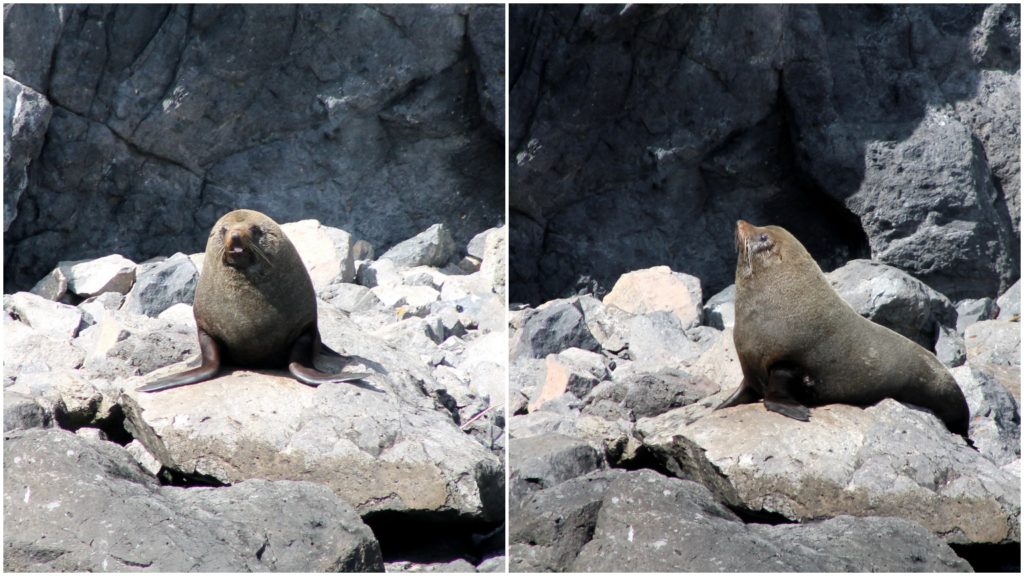
Dunedin is considered a Birders’ Destination. Nestled between bush and hills and girdled by food-rich offshore currents, Dunedin has achieved the reputation as the wildlife capital of New Zealand. In addition to its flagship penguins and albatrosses, the city and environs offer a mixed variety of birds.
The endangered and impressive NZ Sea Lions are returning to the sandy beaches around the area.
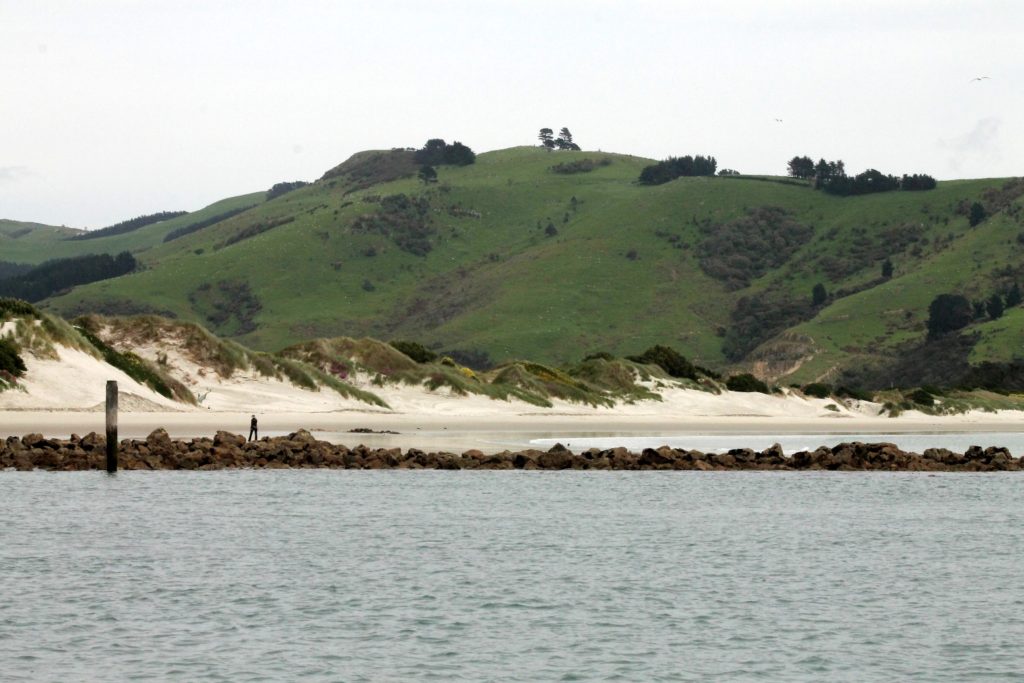
The beaches are gorgeous there!
Taiaroa Head (named after a Māori chief), is a headland at the end of the Otago Peninsula in New Zealand, overlooking the mouth of the Otago Harbour. The cape is home to a lighthouse, built in 1864, and a colony of over 100 northern royal albatrosses, which established itself in 1919 – the only such colony on an inhabited mainland.
At the tip of Otago Peninsula lies Taiaroa Head with its wonderful wildlife reserve and Royal Albatross Observatory. The rocky cliffs here are home to not only a large colony of royal albatross but also red-billed gulls, royal spoonbills, rare Stewart Island shag, and southern fur seals. Birdwatchers and nature lovers can also take a tour to nearby Pilots Beach where there is a colony of little blue penguins.
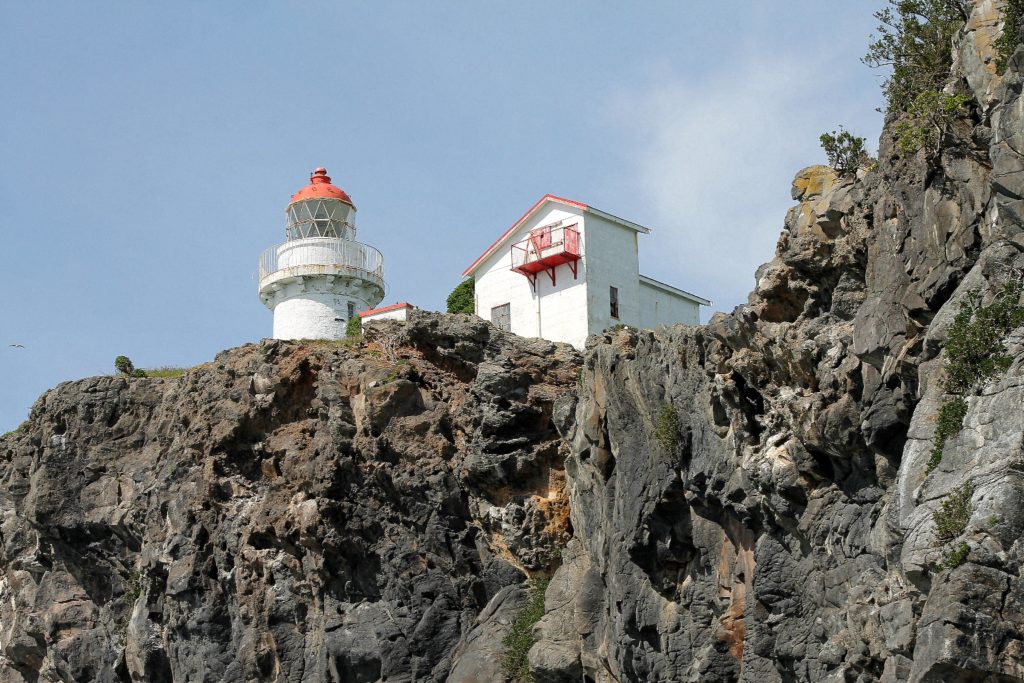
The colony of albatrosses and red-billed gulls.
Here are nesting albatross chicks at the Albatross Colony, as seen from the boat. We were told a few interesting facts about breeding. We learned that Toroa or Northern royal albatross return to land only to breed and raise their young – one chick every two years. Royal albatross usually mate for life at the same nesting area each time. Males arrive at the nesting site first to prepare the nest. Parents share incubation duty in spells of two days to three weeks (eight days on average) over a period of about 11 weeks – one of the longest incubation periods of any bird. After making a hole in the tough shell, chicks take about three to six days to finally emerge from the egg.
Petrel Bird in flight.
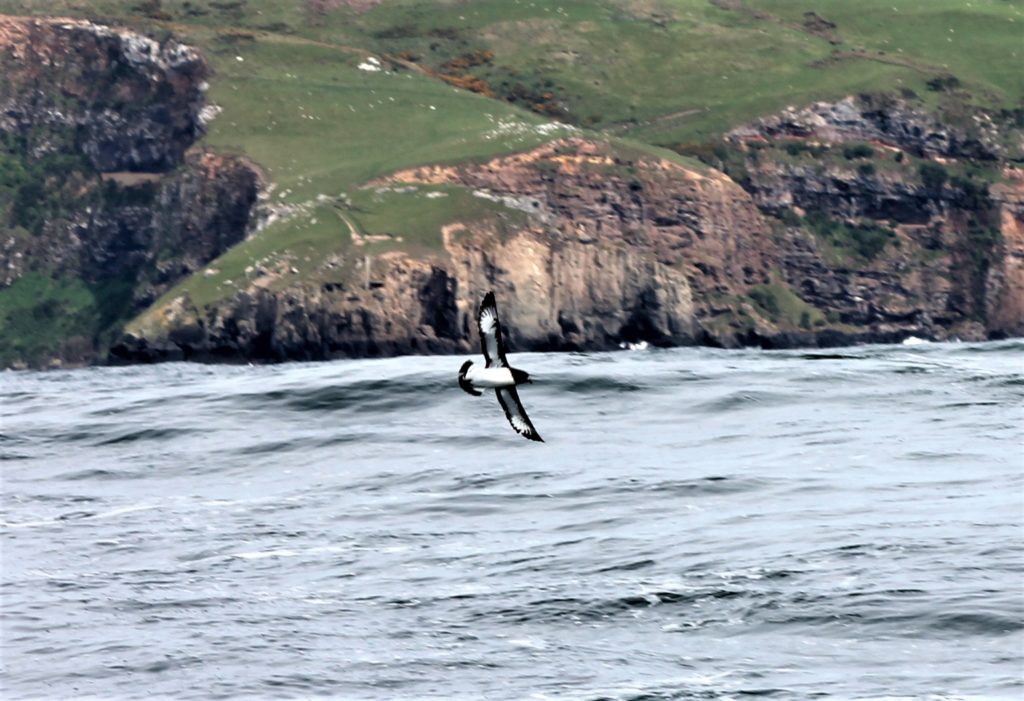
Along with the wandering albatross, royal albatross are the largest seabirds in the world. There are two species of royal albatross, southern and northern. The southern is slightly larger than the northern. At sea it can be distinguished from the northern by its white upper wings with black edges and tips, whereas the upper wings of the northern are completely black. Royal albatrosses are some of the longest-lived birds in the world, regularly living into their 40s.
Northern royal albatross in flight. The Royal Albatross is the biggest sea bird in the world. It’s wings get up to 3 meters length when spread!! Watching them fly is an unforgettable experience. Taiaroa Heads is the only Albatross colony in the world, on the main land, where they can be viewed by the public.
Southern royal albatross in flight.
Birds were attacking a fishing ship. 🙂 It was the end of our wildlife cruise. Our next stop would be the Penguin Place, which is presented in the next post.
